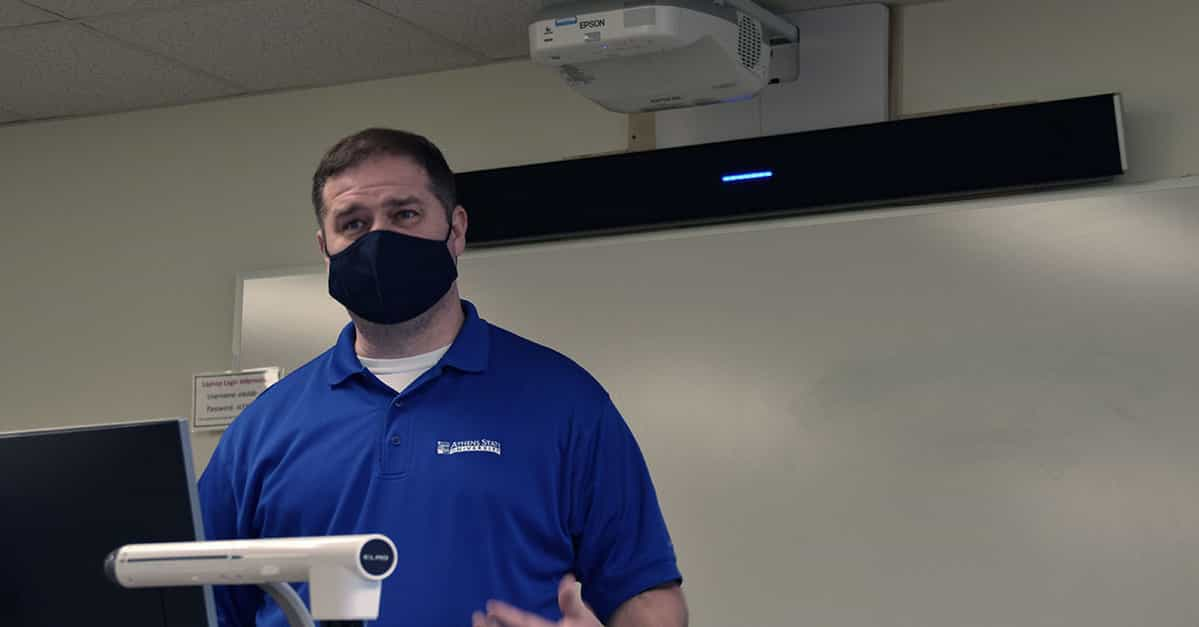Why full classroom audio coverage matters

Posted by Nancy Knowlton | President and CEO of Nureva Inc. on Jun 3, 2021 6:00:00 AM
The pandemic made the point loud and clear – some or all students are not going to be in the classroom at some point in the school year. It doesn’t have to be another pandemic that keeps students away. It could be the flu or any sickness in a household that keeps children home. It could be family travel. It could be a snow day.
While teachers performed heroic acts during the COVID-19 pandemic, that doesn’t have to be the case moving forward. With time to consider needs and create strategies, having a ready plan to support remote learners will be expected by educators and parents alike. Part of that plan means having the tools in place to enable the inclusion of remote learners at any time. That typically means audio, video and a communication application like Zoom, Microsoft® Teams or Google Meet™.
At Nureva, we’re focused on audio – what we think is the most essential part of the distance learning equation. After all, if people can’t hear each other, learning simply can’t happen. But not every audio system is equally suited for the classroom. After talking to countless teachers, we’ve become convinced that full-room audio coverage is essential to any classroom audio setup.
What is full-room audio coverage?
When you choose an audio system that delivers full-room audio coverage, it means that voices are picked up in every part of a space. No matter where students and teachers are standing, sitting, moving or facing, they will be heard clearly by the students not in the room.
One way to get full-room coverage is with a multicomponent beamforming system. These traditional systems can deliver good quality audio but are well out of the price range of most schools. They also can take a long time to install and require periodic adjustment and recalibration over time.
Our audio systems take a different approach to full-room audio coverage. We use our patented Microphone Mist™ technology to fill rooms with thousands of virtual microphones instead, so there’s always a mic nearby. Installation takes much less time – just hang a system on a wall and use the USB cable to connect it to a teacher laptop – you’re ready to go. Continuous autocalibration means it starts working right away and stays working, even when you change the configuration of the classroom.

Why does it matter?
Why does full-classroom audio coverage matter? Movement.
In our experience, things happen naturally and dynamically in a classroom. Teachers respond in the moment. They don’t think about it. They do it. They move. They reach out to students. They connect.
Students do the same. They speak up. They ask questions. They shout out answers. They talk to each other.
Anything that gets in the way of this routine spontaneity and natural flow is going to inhibit learning. If teachers need one way of teaching when all the students are in the classroom and then have to teach dramatically differently with remote students, that is a significant cognitive load. This type of distance learning requires teachers to reach both remote and in-room students at the same time, so this needs to be as easy and seamless as possible.
Restricting a teacher to the front of the classroom because of the limited pickup of an audio system is like playing basketball with one hand tied behind your back. It can be done, but it is not as effective.
Similarly, if students have to wait until the microphone can be passed to them, the thought may evaporate and the moment is lost.
You only have to watch how a teacher moves around the classroom for a short period of time to understand why this is a critical factor for any audio conferencing system that you might install to support remote students.
What does it look like?
Earlier this year, a number of US school districts piloted our HDL300 system to bring full-room coverage to their classrooms. The impact of being able to move freely around the room, teaching without worrying about the technology, was apparent.
In Wichita Falls Texas ISD, one teacher said, “This is probably the happiest I have felt about teaching all year. I feel like I have my movement back.” She told us how much she appreciates being able to respond to remote students no matter where she is in the classroom.
Another teacher, from Linwood Public Schools, mentioned how restricted he felt in the early days of hybrid teaching. The change once he had full-room audio coverage was huge. “For me, the ability to wander around and circulate in my classroom, use my whiteboard and not be tied down to a laptop, let me teach in a natural way and helped me engage my students.”
And for students joining class from home, we heard over and over that full-room coverage helped them feel a part of things, even when they weren’t in the classroom. With the right audio setup, suddenly it was possible for remote students to hear exactly what everyone in class was saying – which gave them the confidence to ask questions, jump into discussions and share ideas – all things essential for engaged, active learning.
Successful learning is all about flexibility – and so is full-room audio coverage. Choosing an audio system with true full-room coverage lets teachers teach naturally. And it also allows students to join from home but still feel like they’re part of class. And that can make all the difference.
Built for the evolution of education
Nureva® audio solutions offer groundbreaking simplicity and value to educators looking to improve their virtual PD sessions, hybrid admin meetings or distance learning classes. Find out how we can help you realize your vision.
Editor’s note: This post was originally published June 2021 and has been updated.

Posted by
Nancy Knowlton | President and CEO of Nureva Inc.
June 3, 2021















